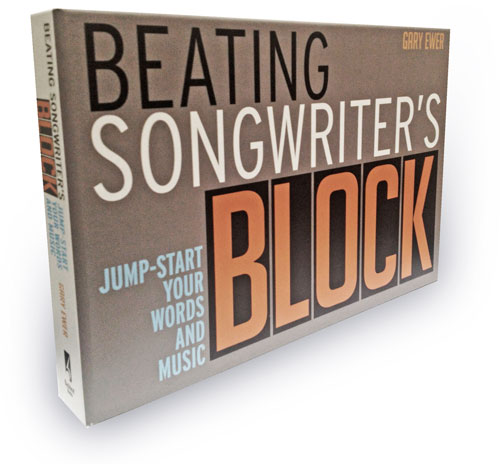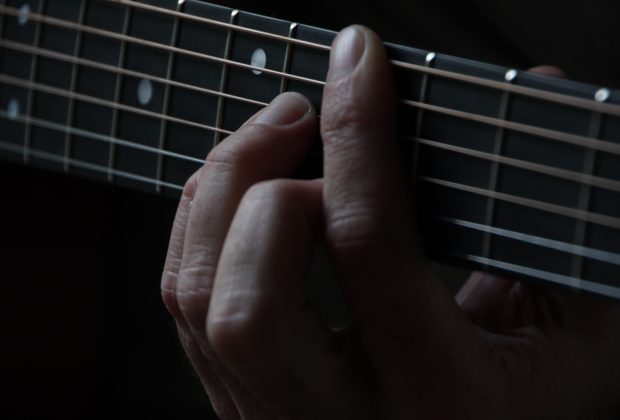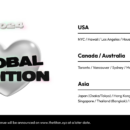Improve Your Audio for Video!
As a musical exercise, nothing beats improvising. It doesn’t just improve your playing chops – it’s a great generator of songwriting ideas. While it’s often thought of as a group activity, there are ways to improvise on your own––just you and your instrumen––that can provide you with great material for your next song. Many of the ideas listed below come from Chapter 3 of Gary Ewer’s new book, Beating Songwriter’s Block: Jump-Start Your Words and Music. The first five activities will help you create melodies, and the next five pertain to creating lyrics. Some involve singing, others will use guitar or keyboards. Most of them work as solo activities, but are fun to try with a fellow songwriter. Feel free to modify them to suit your purposes.
 SOLO IDEAS
SOLO IDEAS
1. Play the following 4-chord turn-around: C F Dm G, or invent your own. Now… start singing––anything. Keep in mind that most good song melodies are comprised of repeating ideas, so try singing the same short fragment repeatedly as you change chords. The key to generating ideas is to keep things simple.
2. Detune your guitar to something other than the standard E-A-D-G-B-E. Move your B up to C, your G down to F#... that sort of thing. Now start improvising chords and melodic shapes as if you were playing a standard tuning. Why? The odd tuning will give you melodic and harmonic ideas you’d probably not have found otherwise. The best results happen when you detune your guitar randomly. Be prepared for weird sounds, but you’ll probably stumble on something that’ll get the creative juices flowing.
3. Dial up a short rhythmic/chord loop on your synthesizer and sing or play improvised melodies. Handing over part of the musical job to a synth frees you up to create ideas, both vocal and instrumental.
4. Sing a note that works. A song like Jack Johnson’s “Don’t Believe a Thing I Say,” or the verse of Maroon 5’s “One More Night” show us that melodies can do quite well sitting in and around one pitch. So give it a try: invent a short 3- or 4-chord progression (Am F G C, for example). Play it several times to get it in your ear. Now, start by scat singing rhythmically on one note that works with the first chord. As much as possible, keep that note as you cycle through the chords. When a chord doesn’t support the note, switch to singing a note that works.
5. Create new melodies by borrowing from old ones. Take an old hit (“Hound Dog”, for example), and write down the all the notes used in that melody. (“Hound Dog” uses G-A-C-D-D#-E, listed from low to high.) Now put “Hound Dog” completely out of your mind and use that tone set to create an entirely new melody. As with our first idea, use lots of repeating patterns, but use only those six notes.
6. Choose a book from your bookshelf or from a blog or online news site. Open randomly to any page, or scroll to any random spot on a website, and point to the first word you see. With that word in your mind, point to a second word. Quickly invent a short line of lyric within five seconds that starts with your first chosen word and ends with the second one. Repeat. Example: You open a book and point to the word, “that,” and then you point to “more.” Possible lyric: “That is how I know I love you more.”
7. The best lyrics are not necessarily poems; they’re made of simple words whose main job is to stimulate the imagination of the listener. Take the following list of words and paraphrase them in as many different ways as you can that might work in a descriptive lyric. Work quickly. (The first one has been done to demonstrate.):
• Fog: The grey murkiness; through the misty haze; in the cloudy haze; the soup; etc.
• Happiness
• Anger
• Trust
• Held on
• Heartbroken
8. Lyrical clichés will kill a song faster than you can say Jack Robinson. (See what I did there?) “What goes around, comes around” is a cliché that’s not very interesting. But “What comes around is gone again” has potential. Or you might change “A friend in need is a friend indeed” to “A friend indeed, but what do I need?” Both of those examples turn the original expression around backwards, giving you something that’s a bit more creative. So for a fun improvising activity, Google “The Phrase Finder” website, have a songwriting partner read one of the sayings to a rhythmic beat, and try creating something spontaneously by reversing the order of some of the words. Another example: “Every cloud has a silver lining” might become “My silver lining turned a little cloudy.”
9. Bounce lyrical ideas off a songwriting partner. Sit facing each other, keep a beat by tapping your foot or dialing up a loop. Then one of you speaks out a line, and the other one has to immediately answer it with a line of their own. “I got you, and you got me”… “Anywhere I’m with you is where I wanna be…”
10. Try brainstorming titles. Work as quickly as you can. Don’t worry about clichés, just get a list of titles written that you can consider later. Some titles may just pop into your head with no story behind them at all: “That’s the Way To Do It.” Others may be a bit silly: “George is Going Crazy, and His World’s a Little Hazy.” Later, look through your list, strum a chord, and say the titles with a considerable amount of melodrama and vocal expression. See if melodic ideas pop into your mind.
GARY EWER is a veteran music teacher, clinician, composer and arranger. His interest in the relationship between the pop and classical worlds eventually led him to write an ebook for songwriters, The Essential Secrets of Songwriting, that looks at hit songs in much the same way a classical musician would analyze a symphony. Through his writings, he shows songwriters how to take their music to a new level of excellence. He is the author of Beating Songwriter’s Block: Jump-Start Your Words and Music, published by Backbeat Books. His songwriting blog can be found at http://garyewer.wordpress.com.











